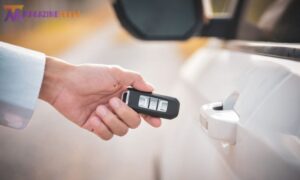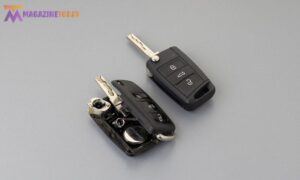Car key batteries are an essential component of modern vehicles. Whether you use a key fob or a remote entry system, a functional battery ensures seamless access to your car and its features. Over time, however, these batteries can wear out, causing inconveniences. Recognizing the signs of a weak battery and knowing how to perform key battery replacement are vital skills for any car owner. In this guide, we’ll walk you through the replacement process, common battery types, troubleshooting tips, and best practices to extend battery life.
What is a Key Battery?


A key battery powers electronic car keys, often called key fobs or remote entry systems. These batteries are typically small, coin-shaped lithium cells designed to last several years under normal use. Key batteries enable functions such as unlocking and locking doors remotely, activating alarms, and starting cars with push-button ignition systems. Without a functional battery, these features may stop working, causing inconvenience.
Modern vehicles increasingly rely on advanced key fob systems for additional features, such as trunk opening, remote start, and proximity unlocking. Understanding your key’s battery type, expected lifespan, and usage patterns can help you plan for timely battery replacement and avoid disruptions.
Signs Your Key Battery Needs Replacement
Recognizing the signs of a dying key battery can save you from unexpected inconveniences. Here are the most common symptoms to watch out for:
Reduced Range
When your key fob’s range decreases, requiring you to be closer to the car for it to work, it’s often a sign of a weakening battery. This is one of the earliest indicators that key battery replacement might be needed.
Delayed or Unresponsive Functions
If the buttons on your key fob respond slowly or fail to work entirely, the battery might be running low. This can cause significant inconvenience, especially in urgent situations.
Dashboard Warnings
Many modern vehicles are equipped to notify you when the key fob battery is low. Look for messages like “Key Battery Low” or similar prompts on your car’s dashboard.
Dim Indicator Lights
Most key fobs have small indicator lights that blink when a button is pressed. Dim or non-functional lights are another clear sign that the battery is losing power.
Complete Signal Failure
If your key fob stops working entirely, the battery may be completely drained. This can prevent you from locking, unlocking, or starting your car, necessitating immediate key battery replacement.
Types of Key Batteries


Most key fobs use coin cell batteries, but the exact type depends on the make and model of your car. Understanding the types available can help you make informed purchases:
CR2032: This is one of the most commonly used key fob batteries due to its compact size and long-lasting performance. It’s compatible with a wide range of car models.
CR2025: Slightly thinner than the CR2032, the CR2025 is used in specific key fob designs. Always check compatibility before purchasing.
CR2016: Smaller in size, the CR2016 is often found in compact or lightweight key fobs.
Always consult your car’s user manual to identify the correct battery type. Using an incompatible battery can lead to malfunctioning or damage to the key fob, making proper key battery replacement critical
How to Replace a Key Battery
Replacing a key battery is a straightforward process that usually takes only a few minutes. Here’s a step-by-step guide:
Step 1: Gather Tools and Materials
You’ll need a replacement battery that matches your key fob’s specifications and a small flathead screwdriver or a similar tool to open the fob. Ensure you work on a clean, flat surface to avoid losing any small components during the battery replacement process.
Step 2: Open the Key Fob
Look for the seam or slot along the edge of your key fob where it can be split apart. Use the screwdriver to pry it open gently. Be careful not to use excessive force, as this could damage the casing.
Step 3: Remove the Old Battery
Carefully remove the old battery from its compartment. Take note of its orientation (positive and negative sides) so you can insert the new battery correctly during the key battery replacement.
Step 4: Insert the New Battery
Place the new battery into the compartment, ensuring it’s aligned in the correct orientation. Press it gently to secure it in place.
Step 5: Reassemble the Key Fob
Snap the key fob casing back together, ensuring all edges are properly aligned and secured. Double-check that it’s sealed to prevent dirt or moisture from entering.
Step 6: Test the Key Fob
Test all the key fob’s functions, including locking, unlocking, and starting the car, to confirm that the battery replacement was successful.
Tips for Extending Key Battery Life
While key batteries are durable, their lifespan can vary based on usage. Follow these tips to extend their longevity and delay the need for key battery replacement:
Avoid Excessive Button Presses
Repeatedly pressing buttons unnecessarily drains the battery. Use the key fob only when needed, and avoid fidgeting with the buttons.
Store Keys Properly
Keep your key fob in a cool, dry place away from direct sunlight, heat sources, or moisture. Extreme temperatures can reduce battery performance and lifespan.
Use Spare Keys
Rotate between your primary and spare keys to distribute battery usage evenly. This ensures that both keys remain functional for longer periods, delaying key battery replacement.
4. Disable Passive Entry Features
Some vehicles allow you to disable passive entry systems that constantly communicate with the key fob. Turning off this feature can significantly reduce battery consumption.
5. Replace Batteries Proactively
Don’t wait for your key fob to stop working completely. Replace the battery as soon as you notice signs of weakening to avoid unexpected issues and ensure timely key battery replacement.
Troubleshooting Common Issues


Even after replacing the battery, you might encounter issues with your key fob. Here’s how to address them:
1. Key Fob Doesn’t Work After Battery Replacement
Check Battery Orientation: Ensure the battery is inserted correctly, with the positive and negative sides aligned properly.
Inspect for Damage: Look for loose connections, corrosion, or other damage inside the fob.
Test the Battery: Verify that the new battery is functional. Occasionally, new batteries can be defective, requiring another key battery replacement.
2. Poor Signal Range
Replace the battery again to ensure it’s fresh.
Check for interference from other electronic devices or metal objects that could block the signal.
3. Persistent Issues
Reprogramming Needed: Some key fobs require reprogramming after a battery change. Consult your car’s manual or a professional for assistance.
Professional Inspection: If issues persist, the key fob might need repair or replacement by an expert.
(FAQs)
1. How Long Do Key Batteries Last?
Most key fob batteries last 2-5 years, depending on usage and storage conditions. Regular use and exposure to extreme temperatures can shorten this lifespan, leading to the need for battery replacement.
2. Can I Replace the Battery Myself?
Yes, replacing a key battery is simple and doesn’t require professional assistance. Follow the steps outlined above or refer to your car’s manual for detailed instructions on key battery replacement.
3. What Happens If My Key Battery Dies?
If your key battery dies, you might lose remote access to your car but can still use a mechanical key (if available) to unlock the doors. Some vehicles also have an emergency ignition slot for dead key fobs, ensuring you can address key battery replacement at your convenience.
4. How Much Does a Replacement Battery Cost?
Replacement batteries typically cost $3-$10, depending on the type and brand. Purchasing from reputable sources ensures quality and reliability during key battery replacement.
5. Where Can I Buy Key Batteries?
Key batteries are widely available at electronics stores, automotive shops, and online retailers. Ensure you purchase the correct type for your specific key fob model to facilitate smooth key battery replacement.
6. Why is My Key Fob Not Working After Battery Replacement?
Check the battery’s orientation and the key fob’s internal components. If the issue persists, reprogramming or professional assistance might be required to complete the key battery replacement effectively.
Conclusion
Key battery replacement is a quick and cost-effective way to maintain your car’s convenience features. By recognizing the signs of a weak battery and following proper replacement steps, you can avoid unexpected disruptions. Regular maintenance and care can also extend your key battery’s lifespan, ensuring your key fob functions optimally for years to come. With these tips and guidelines, you can enjoy hassle-free access to your vehicle and stay prepared for any battery replacement needs.






